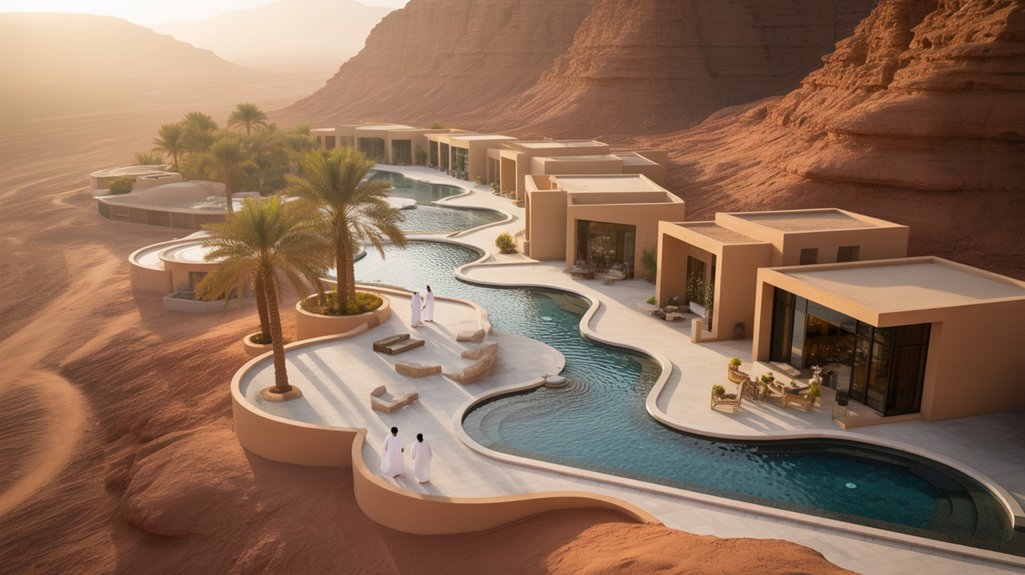You’re witnessing Saudi Arabia’s ambitious transformation into a global health tourism powerhouse, with market projections showing nearly double growth from $5.46 billion to $10.39 billion by 2033. This isn’t just another healthcare expansion story—it’s a calculated move that’s reshaping how the Middle East approaches medical tourism. The kingdom’s strategic positioning between continents, combined with massive infrastructure investments, creates opportunities that’ll challenge established medical destinations worldwide.
Vision 2030’s Strategic Role in Healthcare Tourism Development

As Saudi Arabia transforms its economy through Vision 2030, the kingdom’s healthcare tourism sector has emerged as a cornerstone of this ambitious diversification strategy.
You’ll witness how the government’s investing heavily in world-class medical infrastructure, establishing specialized healthcare cities, and partnering with international medical institutions to elevate treatment standards.
The initiative’s attracting top-tier medical professionals globally while developing local talent through comprehensive training programs.
You’re seeing the kingdom leverage its strategic geographic position, connecting Asia, Africa, and Europe to become a regional healthcare hub.
Vision 2030’s regulatory reforms are streamlining medical licensing, improving patient safety protocols, and enhancing service quality.
These coordinated efforts position Saudi Arabia as a premier destination for advanced medical treatments and wellness services.
Market Growth Drivers Behind the 7.41% CAGR Projection
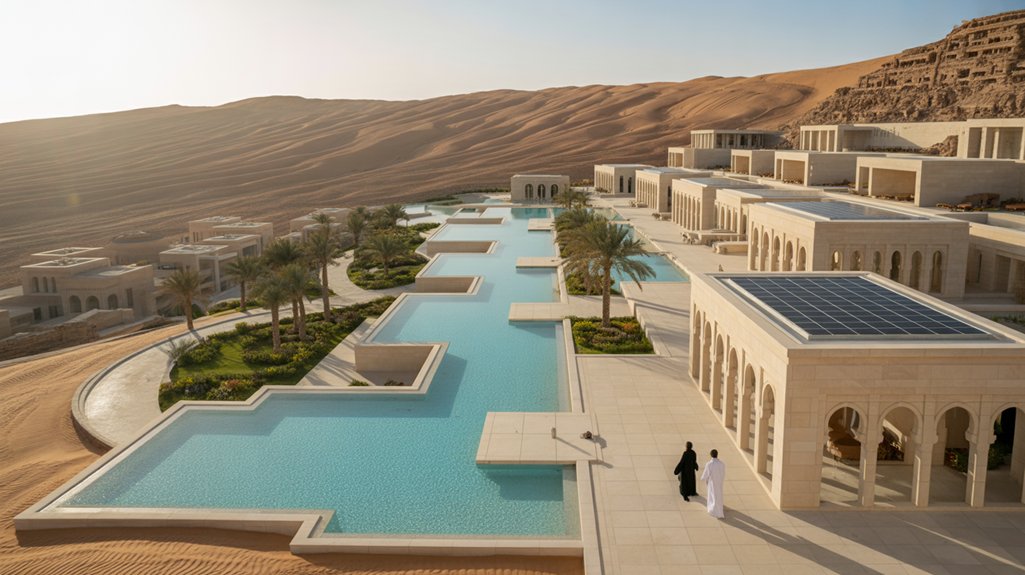
While Vision 2030 sets the strategic foundation, several concrete market forces drive Saudi Arabia’s health and wellness tourism sector toward its projected 7.41% compound annual growth rate through 2030.
You’ll see increased domestic demand as Saudis’ healthcare awareness grows and disposable income rises. The kingdom’s strategic geographic location attracts medical tourists from neighboring Gulf states and Africa seeking quality treatments.
You’re witnessing massive infrastructure investments in world-class hospitals, wellness resorts, and specialized medical facilities. Government incentives encourage private healthcare investments while regulatory reforms streamline medical tourism processes.
Additionally, you’ll notice growing international partnerships with renowned healthcare providers, enhanced digital health services, and expanding medical specializations that position Saudi Arabia as a regional healthcare hub.
Key Medical Specialties and Treatment Categories Attracting International Patients
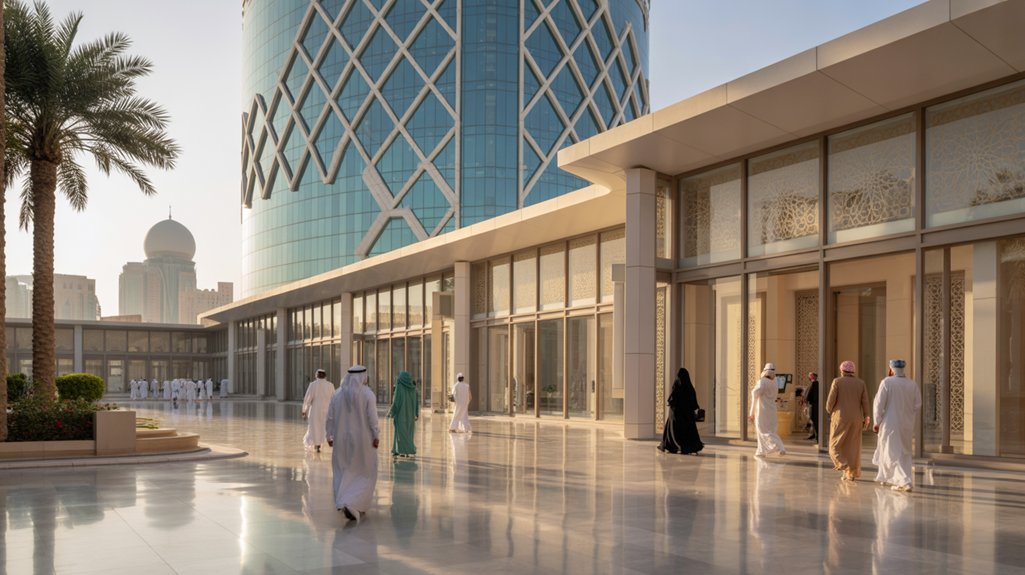
Five primary medical specialties drive Saudi Arabia’s appeal among international patients seeking world-class healthcare services.
You’ll find exceptional cardiac surgery programs featuring cutting-edge procedures and internationally trained specialists. Oncology treatments draw patients through comprehensive cancer centers offering advanced therapies and clinical trials unavailable elsewhere.
Orthopedic services excel in joint replacements and sports medicine, utilizing robotic surgery and regenerative treatments.
You can access premier fertility and reproductive health services with high success rates and personalized care protocols. Cosmetic and reconstructive surgery attracts patients seeking aesthetic procedures performed by board-certified surgeons in state-of-the-art facilities.
These specialties benefit from Saudi Arabia’s substantial healthcare investments, creating centers of excellence that combine advanced technology with competitive pricing compared to Western alternatives.
Infrastructure Investments Transforming Saudi Arabia’s Healthcare Landscape
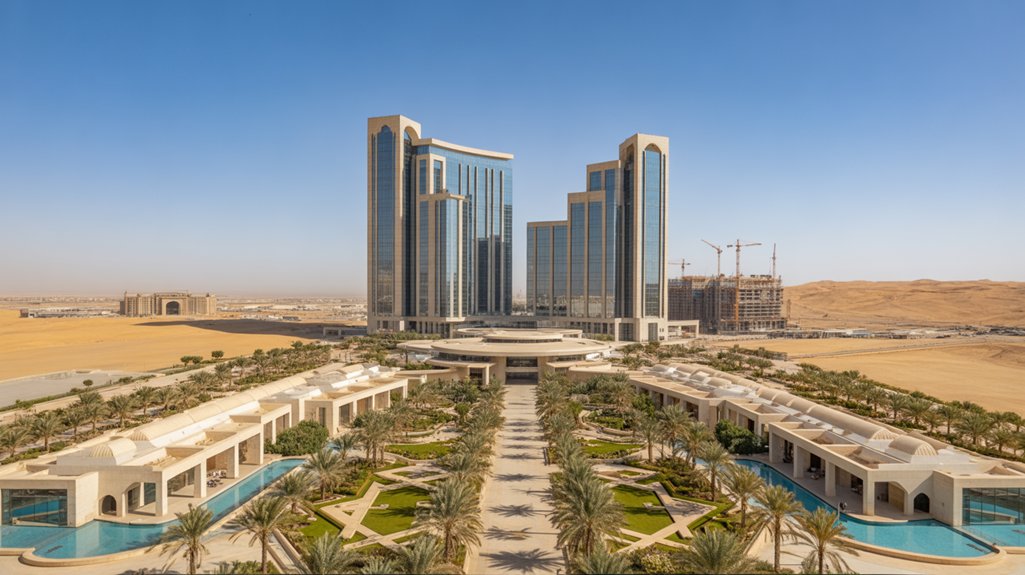
Through Vision 2030’s ambitious framework, Saudi Arabia has committed over $64 billion to healthcare infrastructure development, fundamentally reshaping the Kingdom’s medical landscape.
You’ll witness massive construction projects transforming cities into medical hubs, with Riyadh and Jeddah receiving state-of-the-art hospital complexes featuring cutting-edge technology and international-standard facilities.
The Kingdom’s investing heavily in smart hospitals equipped with AI-driven diagnostics, robotic surgery systems, and telemedicine capabilities.
You’re seeing new medical cities emerging, including the King Salman Medical City and specialized cancer treatment centers that’ll rival global leaders.
These infrastructure upgrades aren’t just improving domestic healthcare—they’re positioning Saudi Arabia as a regional medical destination.
You’ll find expanded airport medical facilities, dedicated medical visa processing centers, and luxury patient accommodation complexes designed specifically for international healthcare tourists seeking world-class treatment.
Traditional Healing Practices Meet Modern Medical Excellence

As Saudi Arabia modernizes its healthcare sector, you’re witnessing a fascinating convergence where ancient Arabian healing traditions seamlessly integrate with cutting-edge medical technology.
The Kingdom’s wellness centers now offer comprehensive treatment programs that combine traditional practices like hijama (cupping therapy), herbal medicine, and aromatherapy with state-of-the-art diagnostic equipment and surgical procedures.
You’ll find specialized facilities where traditional healers work alongside internationally trained physicians, creating personalized treatment plans that honor cultural heritage while ensuring medical excellence.
This unique approach attracts health tourists seeking authentic Arabian wellness experiences without compromising on quality care.
Major medical cities like NEOM are incorporating traditional healing gardens and therapeutic spaces into their designs, positioning Saudi Arabia as a distinctive destination where you can access both ancestral wisdom and modern medical innovations under one roof.
Target Demographics and Geographic Markets for Saudi Health Tourism

This unique blend of traditional and modern healthcare creates compelling value propositions for distinct patient segments across multiple geographic regions.
You’ll find that Saudi Arabia primarily targets affluent patients from Gulf Cooperation Council countries seeking premium medical services at competitive rates. The kingdom’s strategic positioning attracts medical tourists from North Africa, South Asia, and Eastern Europe who require specialized treatments like cardiac surgery, oncology, and orthopedics.
You’re seeing increased demand from wellness-focused demographics aged 35-65 pursuing preventive care and luxury rehabilitation services.
Geographic proximity gives Saudi Arabia advantages in serving patients from Yemen, Jordan, and Egypt who prefer culturally familiar environments. The country’s expanding medical infrastructure specifically caters to international patients seeking world-class healthcare combined with religious and cultural tourism experiences.
Regulatory Framework and International Accreditation Standards
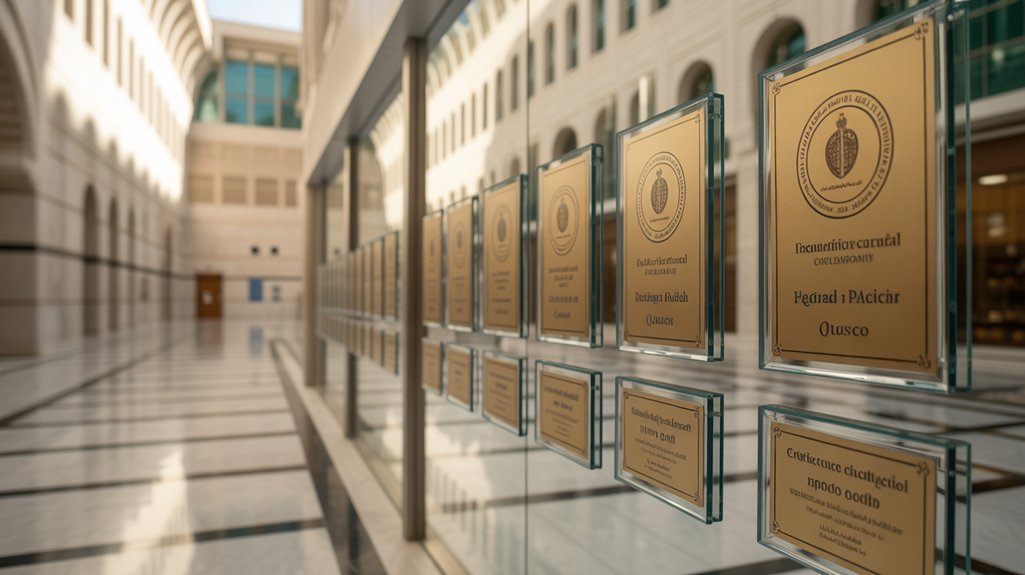
Four key regulatory bodies oversee Saudi Arabia’s health tourism sector, establishing comprehensive frameworks that ensure international patients receive care meeting global standards.
You’ll find the Ministry of Health leads regulatory oversight, while the Saudi Commission for Health Specialties manages healthcare professional licensing. The Saudi Food and Drug Authority controls medical device approvals and pharmaceutical regulations.
You can expect facilities to pursue Joint Commission International (JCI) accreditation, which validates quality standards across patient safety, infection control, and clinical governance.
Many hospitals you’ll visit also seek ISO 15189 certification for laboratory services and HIMSS Analytics recognition for digital health capabilities.
These accreditations demonstrate Saudi Arabia’s commitment to international healthcare excellence, giving you confidence in treatment quality while supporting the kingdom’s Vision 2030 healthcare transformation goals.
Competitive Positioning Against Regional Health Tourism Destinations
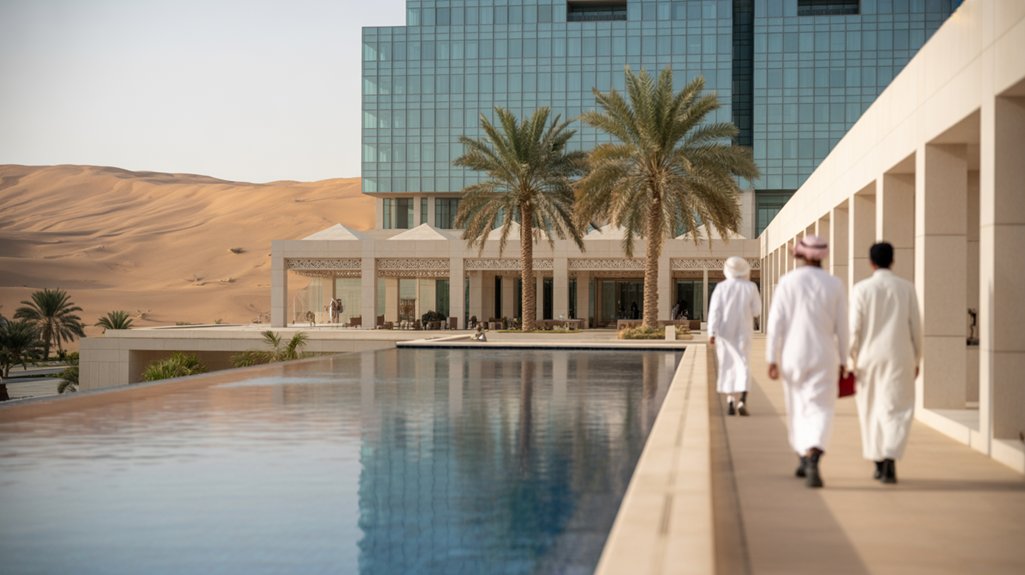
While traditional regional powerhouses like Dubai, Turkey, and Jordan have dominated Middle Eastern health tourism for decades, Saudi Arabia’s strategic investments and regulatory advances position it to challenge their market leadership.
You’ll find Saudi Arabia differentiating itself through state-of-the-art NEOM health cities and comprehensive wellness resorts that competitors can’t match. The Kingdom’s Vision 2030 backing provides unprecedented financial resources, while religious tourism synergies offer unique competitive advantages during Hajj and Umrah seasons.
You’re seeing Saudi Arabia leverage cost advantages over Dubai’s premium pricing while offering superior infrastructure compared to Turkey’s aging facilities. The Kingdom’s JCI accreditations and international partnerships are rapidly closing quality gaps, making it a formidable regional competitor.
Conclusion
You’re witnessing Saudi Arabia’s transformation into a regional healthcare powerhouse. With your kingdom’s $10.39 billion market projection by 2033, you’ll benefit from world-class medical facilities, strategic location advantages, and Vision 2030’s ambitious infrastructure investments. Whether you’re seeking advanced treatments or wellness services, you’ll find Saudi Arabia positioned to compete directly with established destinations like Dubai and Turkey, offering exceptional value and accessibility for regional patients.
